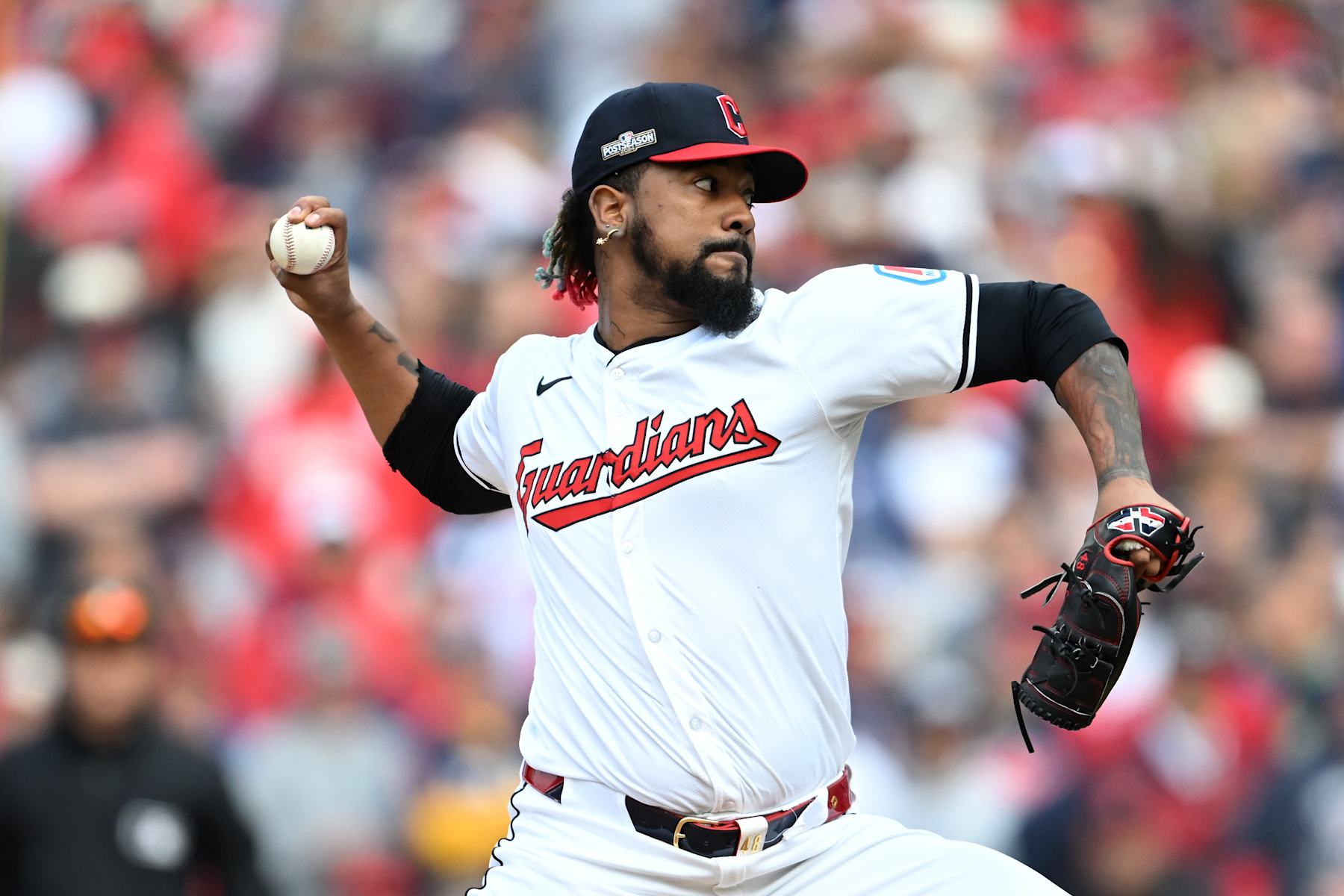
Cleveland’s Emmanuel ClaseNick Cammett/Getty Images
Major League Baseball’s 2024 postseason has already been some kind of wild ride.
Through 27 games, we have yet to be treated to an extra-innings affair, and Philadelphia’s Nick Castellanos delivered the only walk-off hit to date. But between what Pete Alonso did to Devin Williams, what Lane Thomas did to Tarik Skubal, what Kerry Carpenter did to Emmanuel Clase and just the entirety of those Mets-Phillies and Dodgers-Padres NLDS matchups, there has been no shortage of incredible theatre on a daily basis.
What have we learned, though?
Which players have etched their names in immortality, and which others unexpectedly became mortal?
Are the Yankees actually more than just Aaron Judge and Juan Soto after all?
Have openers become the new closers?
Do we have any more clarity on the age-old “rest vs. rust” debate?
Also, we can all now agree on what the biggest win of the trade deadline was, right?
By Golly, the Favorites CAN Win in the ALDS/NLDS
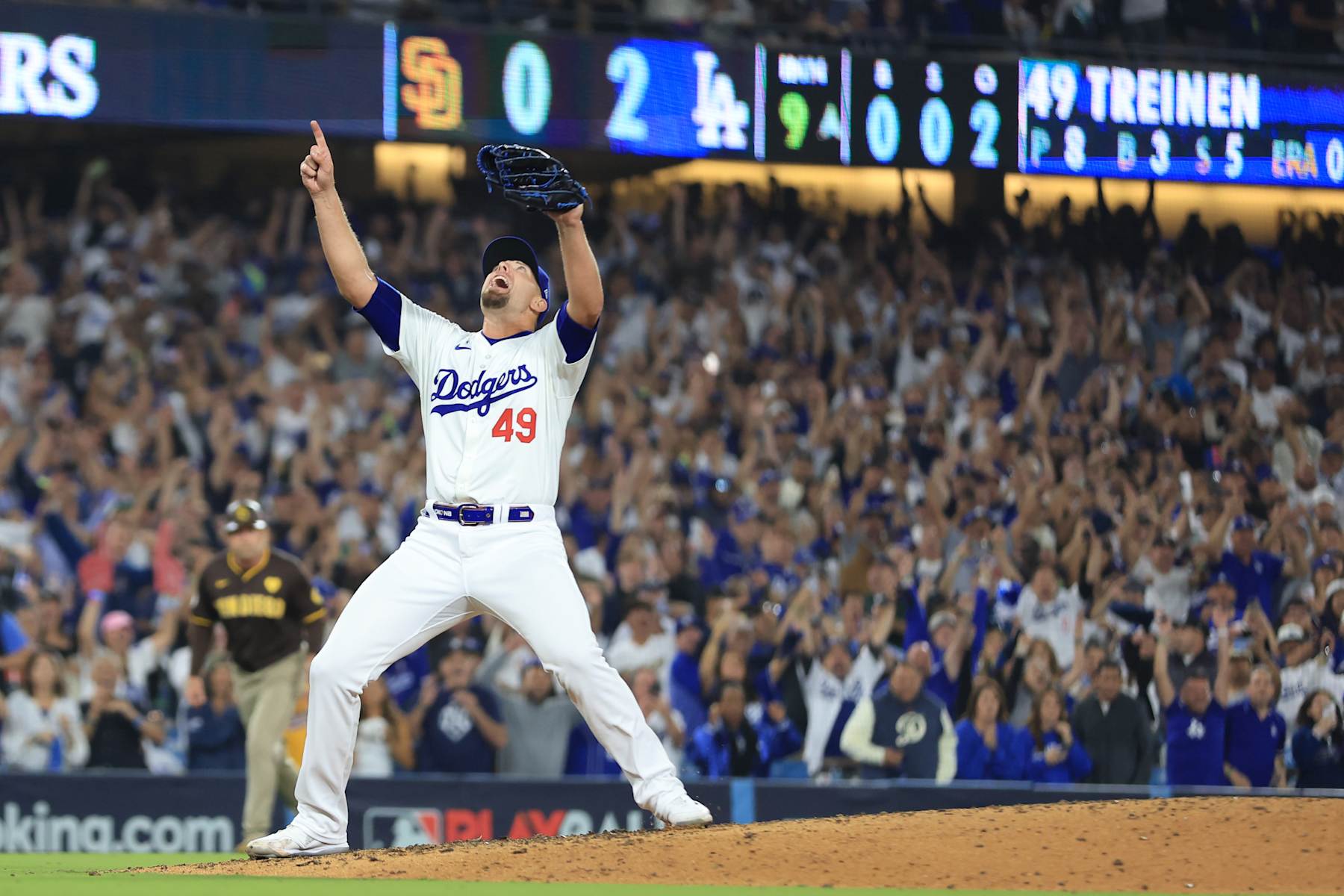
Blake Treinen seals it for the DodgersSean M. Haffey/Getty Images
We were on the verge of it becoming a full-blown *thing* that the rust accumulated during first-round byes carried more weight than the advantage that’s supposed to come with getting a few days of rest.
In the first year of the 12-team postseason format (2022), both the No. 5 and No. 6 seeds pulled off upsets on the National League side of the bracket. The following year, No. 4 Philadelphia, No. 5 Texas and No. 6 Arizona all knocked off the favorites who had first-round byes. And then the first team to advance out of this year’s LDS round was the No. 6 seed New York Mets.
In both 2022 and 2023, the AL’s No. 2 seed survived against the AL’s No. 3 seed. But if you go back and include 2021 when No. 4 seeds Boston and Los Angeles upset No. 1 seeds Tampa Bay and San Francisco, respectively, we were at a point after New York’s toppling of Philadelphia where Nos. 4-6 seeds had won eight out of the last nine ALDS/NLDS matchups against No. 1 and No. 2 seeds.
As is always the case with playoff baseball, though, weird things can happen in small sample sizes, and the scales balanced a bit over the subsequent 72 hours.
First, the No. 1 seed Yankees finished off the No. 5 Royals in four games. Then, the No. 1 Dodgers survived their five-game epic against No. 4 San Diego. Lastly, No. 2 Cleveland did the seemingly impossible by scoring five earned runs off Tarik Skubal to send the No. 6 Tigers packing.
Thus, even after 12 days of what felt like non-stop carnage, we’re left with 75 percent of the teams that are ‘supposed’ to be here.
However…
Never Bet Against the National League’s No. 6 Seed
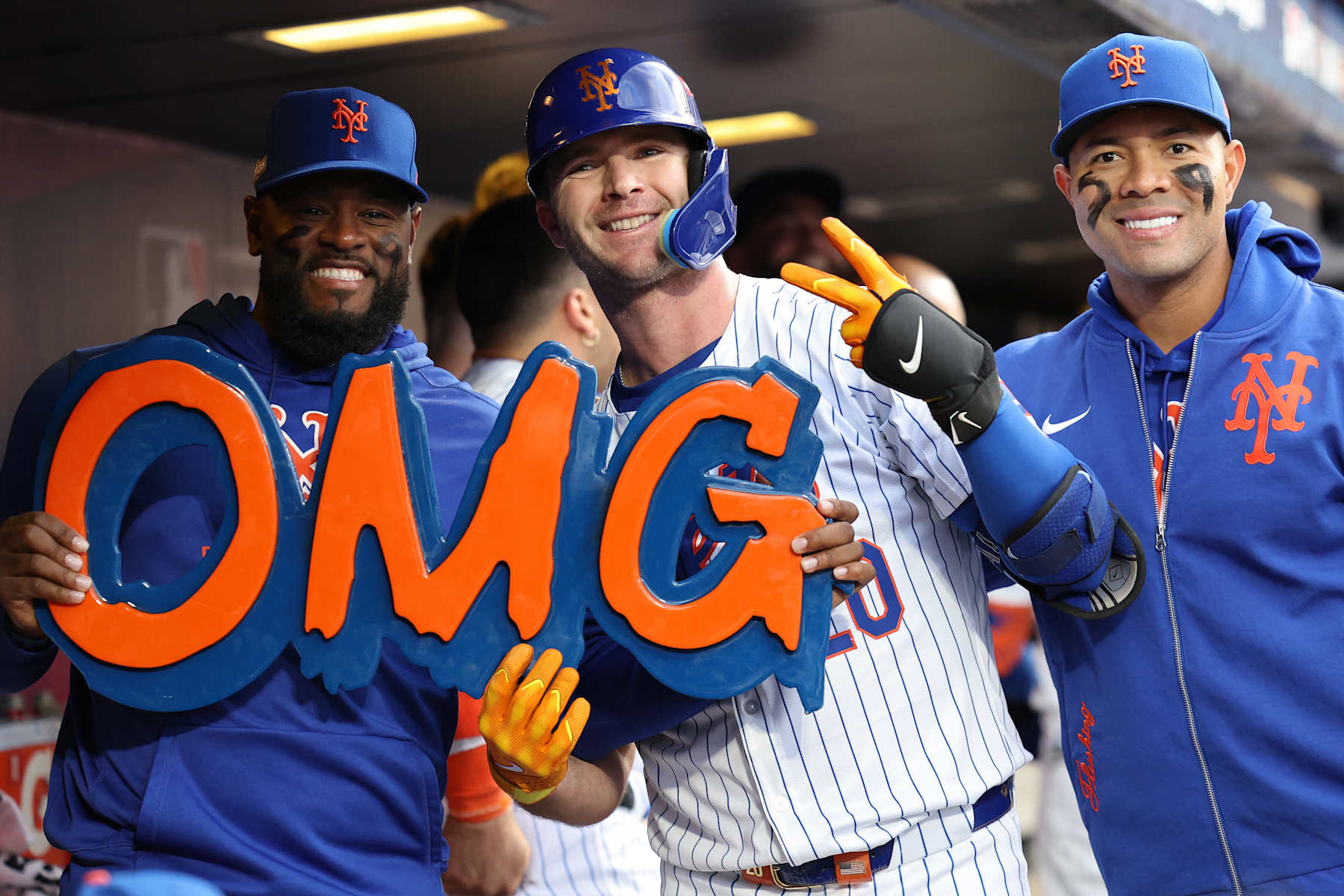
Pete AlonsoElsa/Getty Images
In 2022, the Philadelphia Phillies made it into the postseason by a one-game margin over the Milwaukee Brewers, with both teams losing six of their final 10 regular-season games. It could have gone either way, but the Phils snuck in and promptly caught fire, winning nine of their next 11 to reach the World Series.
The following year, the Arizona Diamondbacks made the cut for that final spot, again by a one-game margin, fueled by an outright collapse by the Chicago Cubs losing 15 of their final 22 games—with six of those losses coming at the hands of the Snakes. Arizona proceeded to sweep its first two opponents before coming back from a 2-0 series deficit to shock the Phillies.
And, friends, here we go again.
This year, it was a three-way tie for the last two spots between Arizona, Atlanta and New York all at 89-73. Because Atlanta won both regular-season series (7-6 vs. New York; 5-2 vs. Arizona), it got the No. 5 seed, while New York’s 4-3 edge over Arizona determined the No. 6 seed.
By the narrowest of margins, the Mets made it. And they have thus far followed that same path of the No. 6 seeds before them, knocking off No. 3 Milwaukee and No. 2 Philadelphia in succession.
When Major League Baseball announced the new format, we all kind of assumed it would be a while before a No. 5 or No. 6 seed made it to the World Series. Not getting a single home game until Game 3 of the DS round and needing to start that series at a considerable disadvantage by deploying either a No. 3 or No. 4 starter on the road against a superior opponent’s ace seemed like quite the deck stacked against them.
Nevertheless, heading into the NLCS against the Dodgers, No. 6 seeds had gone a combined 23-7 against the rest of the National League in the postseason.
They’ve yet to finish the job in the World Series, but let’s just say these $450 million Mets are hardly a long shot to get it done.
After all, it was in the third year of the eight-team format that the No. 4 seed Marlins won it all in 1997, and it was in the third year of the 10-team format that the No. 5 seed Giants won a ring in 2014. And we’re in year No. 3 of this brand new world.
The Rise of the Opener
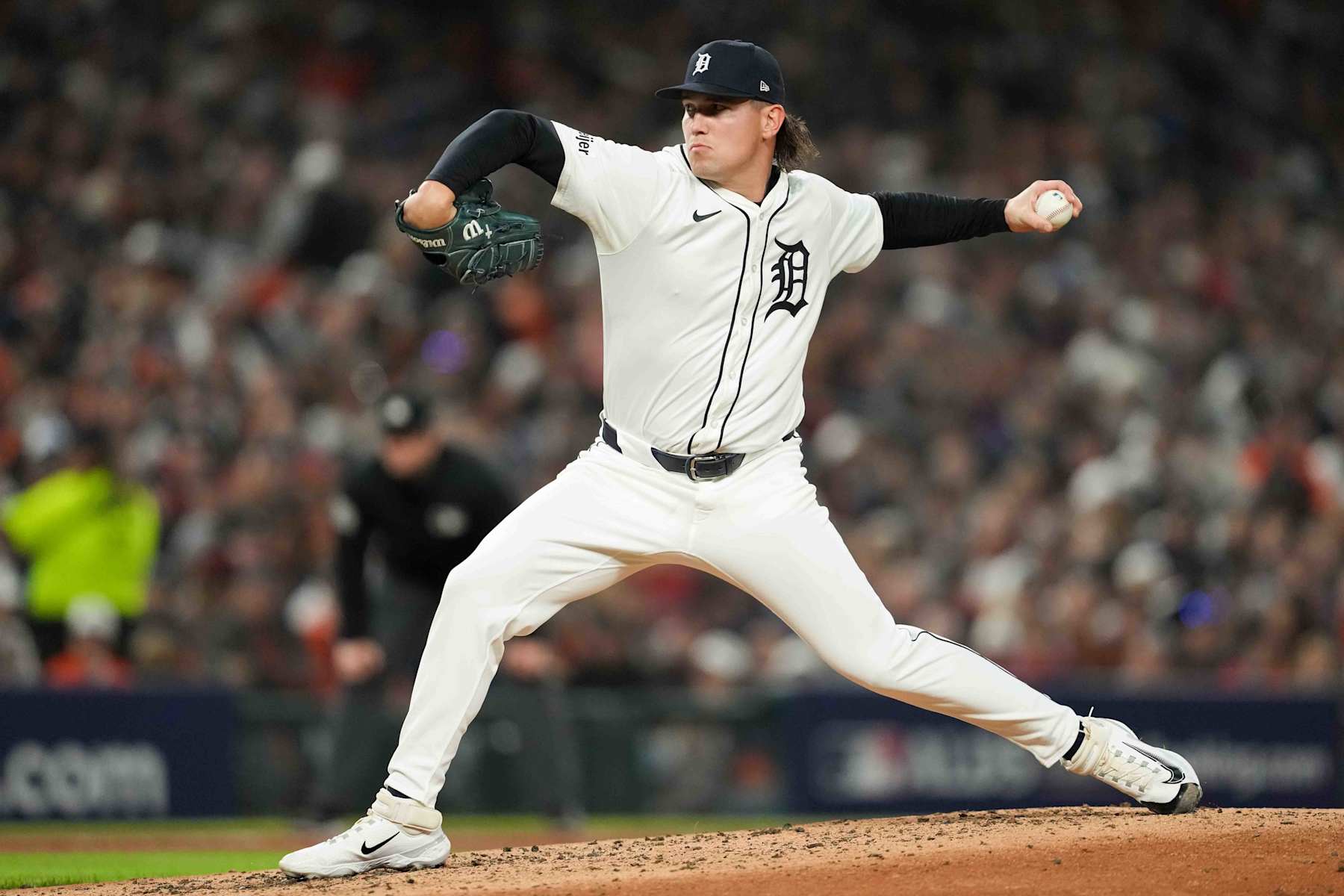
Detroit’s Tyler HoltonNic Antaya/MLB Photos via Getty Images
It was around this time last October that I wrote about the ever-escalating trend of short leashes on starting pitchers in the postseason, noting that the total number of innings pitched by relievers was on the verge of eclipsing the number of innings pitched by starters.
And, friends, it’s only getting worse.
Prior to the Game 5s of the Dodgers-Padres and Guardians-Tigers series, there had been 25 games played this postseason, in which we had these splits:
- Starters: 222.0 IP, 3.72 ERA, 1.20 WHIP, 8.5 K/9
- Relievers: 216.0 IP, 1.83 ERA, 0.91 WHIP, 9.0 K/9
Nearly the same number of innings pitched, but with the relievers faring way, way, way better than the starters, giving more legitimacy to this growing strategy of yanking your starter at the first sign of trouble.
Granted, there have been starters bucking that trend. Zack Wheeler and Corbin Burnes were lights out for 7 IP and 8 IP, respectively, in their lone appearances before elimination. Michael King annihilated Atlanta in Game 1 of that series. Gerrit Cole shut down the Royals in Game 4 of the ALDS. Luis Severino has given the Mets a quality start in each of their series. Yu Darvish was awesome in both of his starts for the Padres. And save for one bad inning, Tarik Skubal was in a class of his own.
Out of those first 50 starts, though, only 12 were quality starts (6+ IP with 3 ER or fewer), and there had been 20 instances where the starter was pulled prior to recording the first out of the fifth inning.
Of course, in several of those cases—mostly by Detroit, by necessity—it was by design, with an opener laying the groundwork for a bullpen game.
There have already been five instances this postseason in which the starting pitcher faced eight or fewer hitters.
The team using that approach won four of those five games, two of them by shutout.
Try to go that route for an entire regular season and your bullpen might just refuse to come to the park one day. But in October, long gone are the rigors of possibly needing to survive 21 games in 21 days. Even with Detroit’s ALDS going the distance, the Tigers had two days off before that series, three days off during the series and would’ve had another day off before the ALCS had they advanced, affording them the luxury of several bullpen games without destroying said bullpen.
So, welcome to the age of the opener, where aces still have value, but where planning on using eight or more relievers to get through any non-ace points in the rotation is evidently a winning strategy.
Unless MLB does something to condense the postseason schedule—or implements that six-inning minimum we started hearing about two months ago—this madness is probably our new normal in October.
The Fall of the Closer?
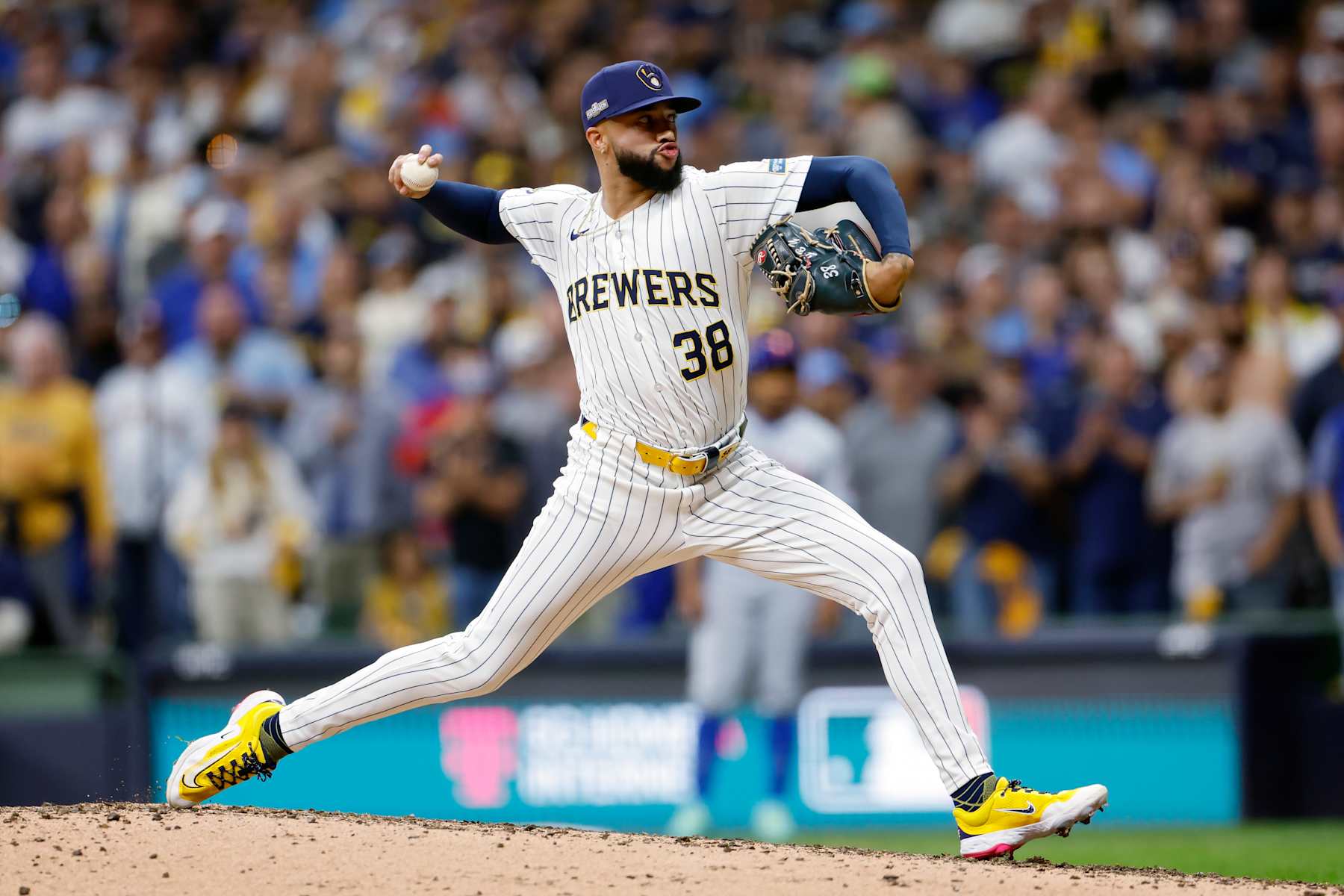
Milwaukee’s Devin WilliamsJohn Fisher/Getty Images
The popularity of the opener continues to rise and relievers, as a whole, have been kicking ass and taking names this postseason.
But what in the world has become of the elite closers?
Among the 12 teams who made the playoffs this year, there were some outstanding ninth-inning options to be found. Emmanuel Clase, Edwin Díaz, Josh Hader and Devin Williams are arguably the four best closers in baseball today, with Carlos Estévez and Raisel Iglesias somewhere in that next tier of most desirable arms to have on the mound with the season on the line.
Iglesias—who had to pitch in both games of that end-of-season doubleheader against the Mets prior to Atlanta never having a late-inning lead to protect against the Padres—didn’t pitch this postseason, but let’s check in on those other five:
- Clase: 5.2 IP, 5 H, 4 ER, 0 BB, 6 K
- Díaz: 3.1 IP, 2 H, 3 ER, 5 BB, 7 K
- Hader: 2.1 IP, 4 H, 1 ER, 2 BB, 0 K
- Williams: 1.2 IP, 3 H, 4 ER, 1 BB, 1 K
- Estévez: 2.2 IP, 2 H, 1 ER, 1 BB, 4 K
Add it all up, and even after Clase’s flawless two-inning save in Game 5 against Detroit, you’re looking at 15.2 IP, 16 H, 13 ER, 9 BB, 18 K, for a 7.47 ERA and a 1.60 WHIP with four saves, three blown saves and two losses..from five of the best closers out there right now.
Meanwhile, Luke Weaver is 31 years old, had never saved a game in either his MLB or minor league career prior to Sept. 6 of this season and is now apparently Mariano Freaking Rivera for the Yankees, recording three saves in 4.1 innings of scoreless work in the ALDS.
Lucas Erceg was also pretty great for the Royals, converting all three of his save chances while not allowing any of his five inherited runners to score.
So, guys named Luke/Lucas who weren’t even on their respective teams 10 months ago can evidently be trusted to get the job done, but every other save situation is a crapshoot.
Mark Vientos Is Awesome
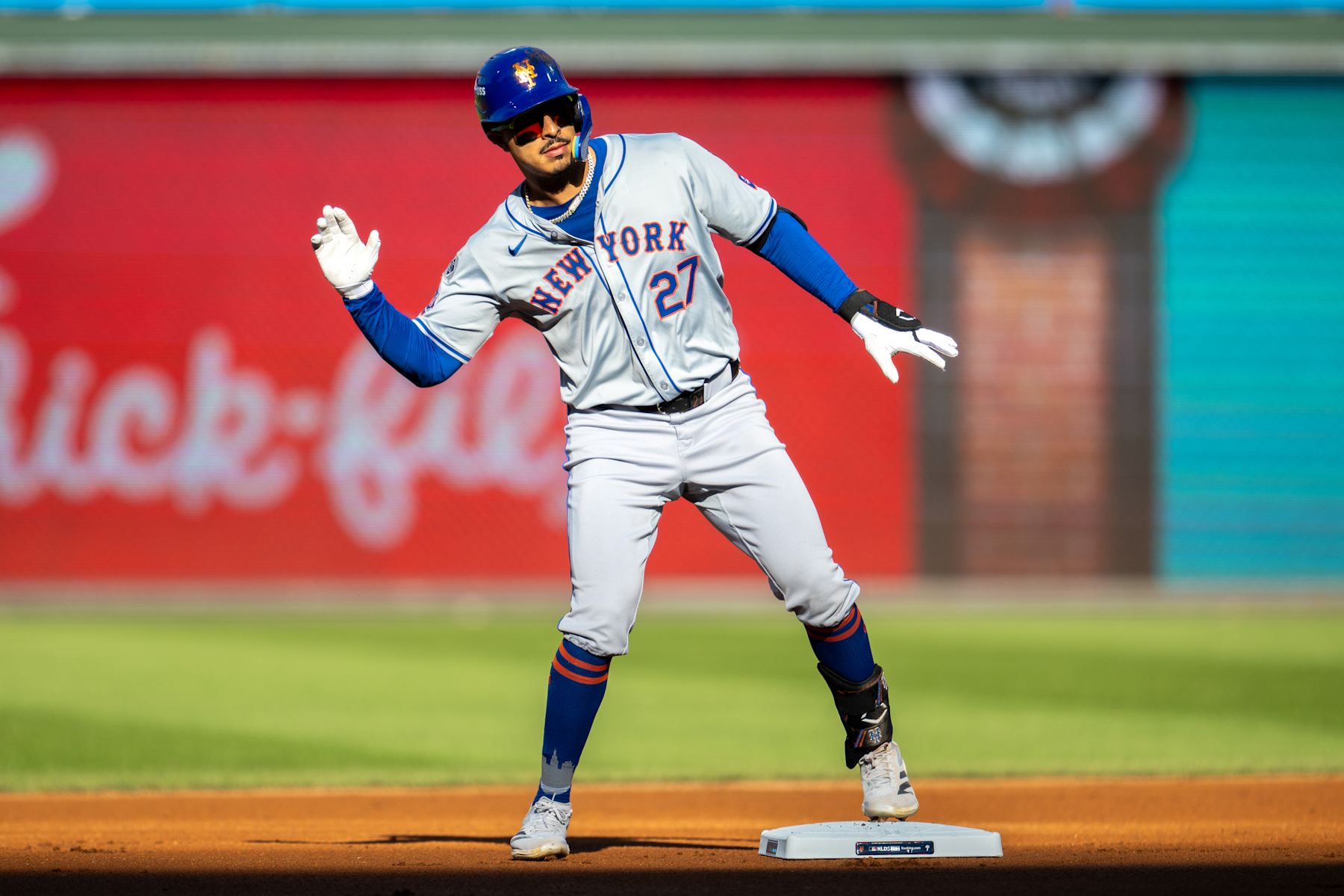
New York’s Mark VientosTerence Lewis/Icon Sportswire via Getty Images
To some extent, we already knew how critical Mark Vientos had been to the New York Mets.
Mid-May is when they called him back up to the majors for the fifth time in his career and started to platoon him and Brett Baty at third base. Within two weeks, they had seen enough—both in the form of continued poor production from Baty and quality work from Vientos—to cement the latter at the hot corner, regardless of the handedness of the opposing starting pitcher.
That’s when their season changed for good, going from 11 games below .500 in late May to an MLB-best 67-40 the rest of the way.
And, sure, there were plenty of other factors.
Francisco Lindor snapped out of his early season slump, as did both Brandon Nimmo and Jeff McNeil for at least a little while. Adding Jose Iglesias when they demoted Baty was an unbelievably valuable swap. David Peterson made his season debut on May 29, gave them a 2.90 ERA in his 21 starts and has become a go-to multi-inning reliever this postseason. Jose Quintana went from a 5.06 ERA through the first two months to a 3.06 ERA the rest of the way. Adding José Buttó to the bullpen mix in early July was huge.
It was as if Carlos Mendoza could do no wrong with any managerial decision.
However, Vientos ended up being New York’s second-most valuable player of the entire season by bWAR standards. And after a bit of a September swoon, he has bounced back in a massive way with five multi-hit performances in his first seven postseason games.
Granted, his best performance (3-for-4 with 2 HR, 4 RBI and a double in NLDS G2) came in a losing effort. Moreover, his colossal dud (0-for-4 with 3 K) in the do-or-die game of the wild-card round almost sent the Mets packing. Still, no one has racked up more hits this postseason than the Mets third baseman who wasn’t even in the majors five months ago.
Hey Now, Weren’t You an All-Star?
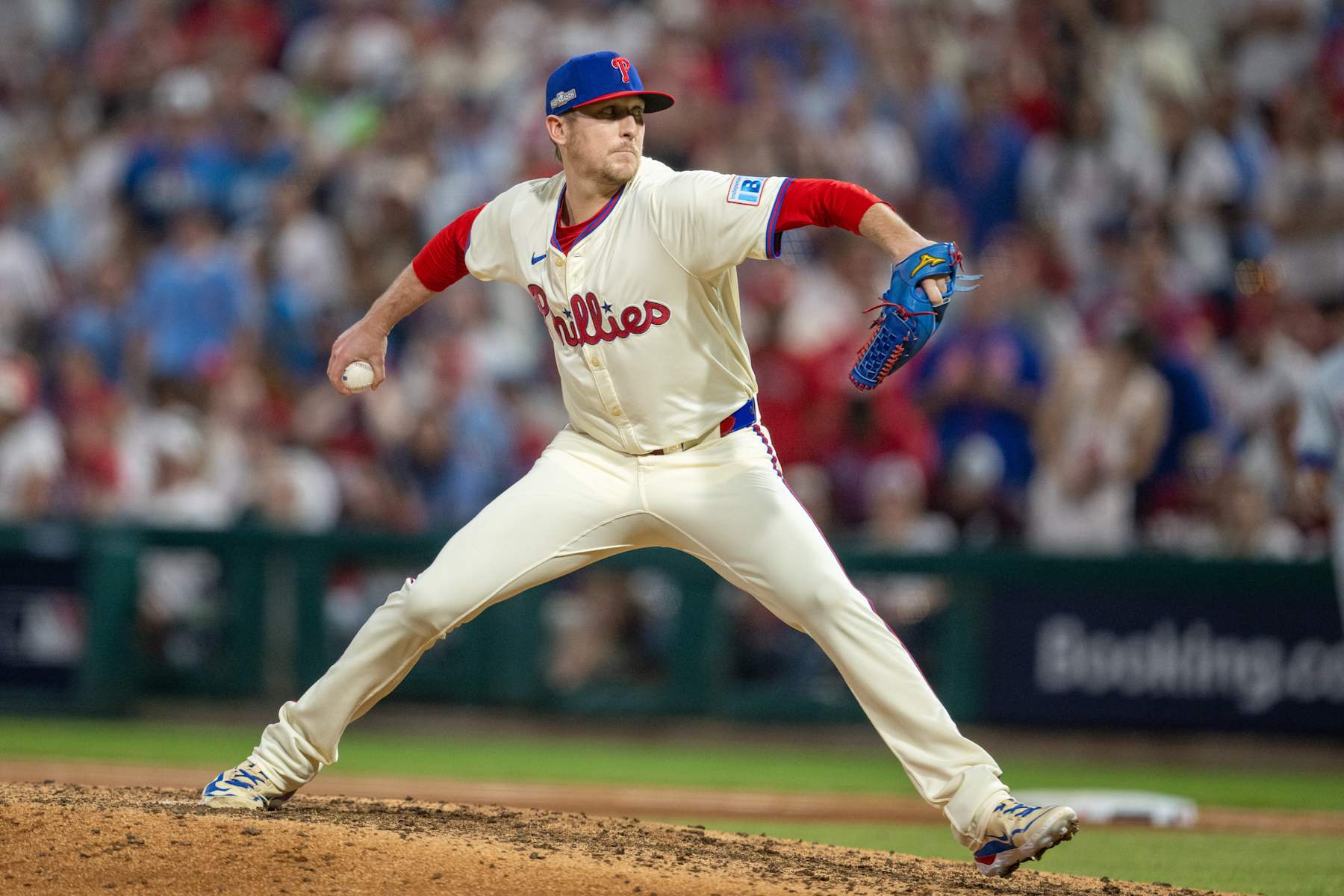
Philadelphia’s Jeff HoffmanTerence Lewis/Icon Sportswire via Getty Images
This one isn’t something we learned this postseason so much as it is a reminder/observation that October baseball can be unforgiving.
This year’s 12 postseason teams had a combined total of 49 players who were All-Stars this summer. That includes both Tanner Scott (who was a Marlin at the time, but ended the year with the Padres) as well as the four players (Tyler Glasnow, Christian Yelich, Chris Sale and Reynaldo López) who did not appear in the postseason.
Some of those All-Stars were awesome through the first two rounds. Fernando Tatis Jr. went 11-for-26 with four home runs for the Padres. Pete Alonso (three), Mookie Betts (two) and Teoscar Hernández (two) each hit multiple home runs. Steven Kwan had no RBI but was a phenomenal table-setter, batting .524 (11-for-21) against the Tigers. And for the most part, the All-Star pitchers were rock solid, including gems by Zack Wheeler and Corbin Burnes.
But of the 31 All-Star hitters who played this postseason, more than half (16) ended the DS round with a batting average of .200 or worse, and only four batted north of .286.
Soon-to-be NL MVP Shohei Ohtani did have a mammoth home run in the second postseason plate appearance of his career, but he went 4-for-20 with 10 strikeouts in the NLDS.
Soon-to-be AL MVP Aaron Judge was even more disappointing, going 2-for-13 with no RBI against the Royals.
Bobby Witt Jr. is going to be the first runner-up to Judge, and he didn’t fare much better. He did deliver the game-winning RBI in each of Kansas City’s two games against Baltimore, but those were his only ribbies of the postseason, going 5-for-26 with no extra-base hits.
At least Witt got some hits, though. Gunnar Henderson was a strong candidate for AL MVP midway through the season, but he went 0-for-7 with four strikeouts. In fact, Baltimore’s four All-Star hitters—Henderson, Adley Rutschman, Anthony Santander and Jordan Westburg—went a combined 3-for-32 as the team scored one run en route to getting swept out of the wild card round.
Philadelphia’s All-Star relievers win the crown of thorns, though. Jeff Hoffman and Matt Strahm had a combined line of 3.1 IP, 7 H, 10 ER, 2 BB, 2 K, blowing two saves and taking two losses in the NLDS.
Between those two, Orion Kerkering and trade deadline acquisition Carlos Estévez, this was supposed to be the year that the Phillies didn’t have bullpen problems in October for a change. But the small sample sizes of the postseason can be absolutely brutal, even to players who were the best in the business. (More on that shortly.)
Yankees Can Win Without Dynamic Duo

Aaron Judge and Juan SotoScott Winters/Icon Sportswire via Getty Images
The way we all talked about Aaron Judge, Juan Soto and the New York Yankees over the past six months, you might think they were the only two hitters from this offense who could get on base, tasked with either scoring or driving in every run the team scored.
As such, had you been able to tell us before the ALDS that Judge and Soto would go a combined 6-for-27 with no home runs and two RBI, we would have assumed the Yankees fell short of the ALCS yet again.
Lo and behold, they took three out of four from the Royals, with Alex Verdugo—of all people, the one player Yankees fans loudly wanted to kick to the curb to make room for Jasson Domínguez—coming up huge in Game 1, Giancarlo Stanton delivering the goods in Games 3 and 4 and Gleyber Torres homering and reaching base safely eight times.
The biggest development, however, was the bullpen holding down the fort over and over again.
It had barely been a month since Aaron Boone said the Yankees would need to “get creative” with their bullpen, in light of Clay Holmes’ incessant blown saves and the complete lack of anyone else with anything resembling meaningful experience in save situations.
Yet, there was Holmes, pitching in all four games with a combined five scoreless innings. And Holmes’ replacement at closer, Luke Weaver, doing the same, albeit for 4.1 innings instead of 5.0.
All told, the Yankees bullpen logged 15.2 innings without allowing an earned run, evidently drinking the magic potion that the Rangers and Diamondbacks discovered last October, which turns season-long bullpen woes into an inexplicable source of strength.
Tarik Skubal and Emmanuel Clase Are, In Fact, Human
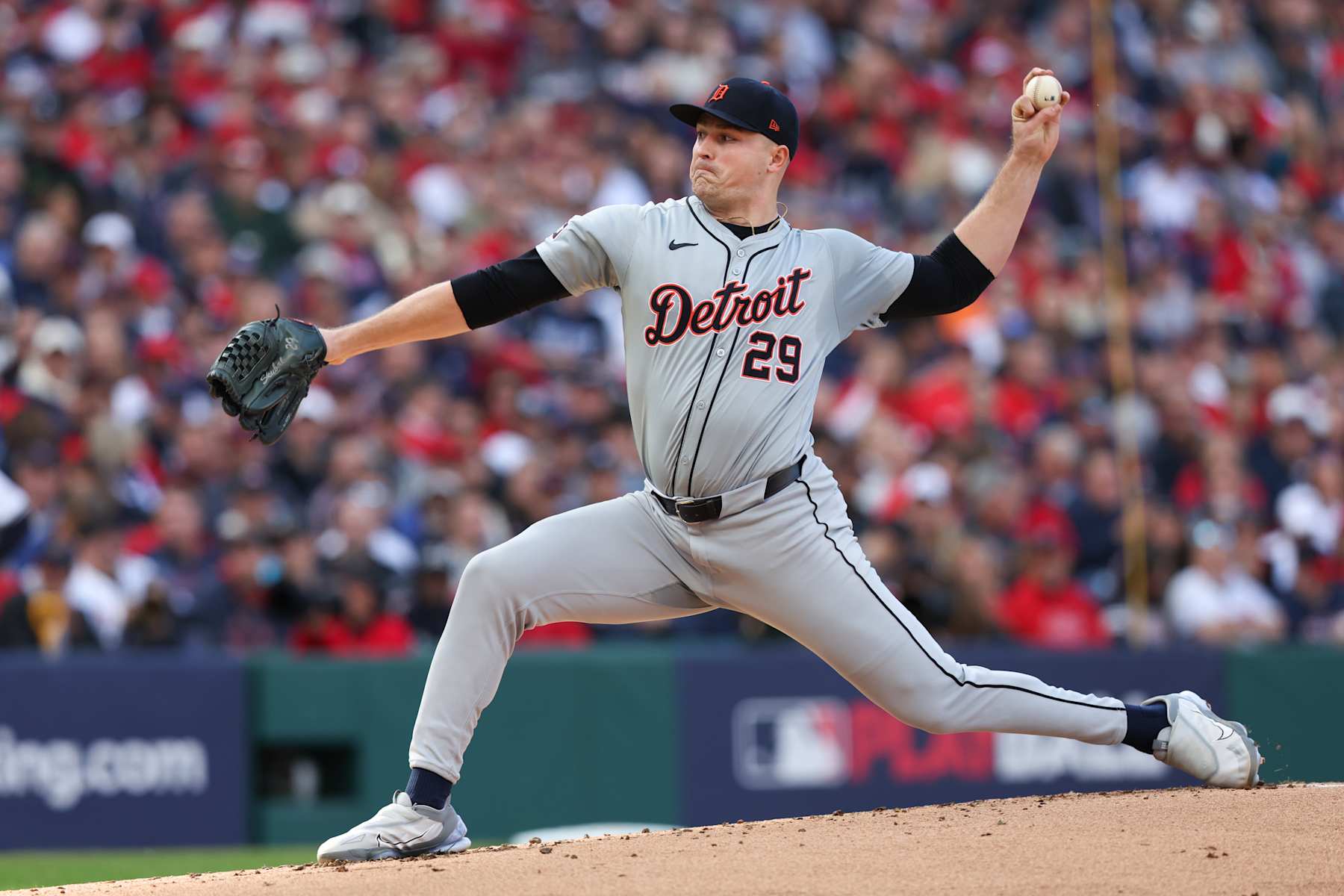
Detroit’s Tarik SkubalLauren Leigh Bacho/MLB Photos via Getty Images
Cleveland’s Emmanuel Clase had just about the best regular season by a closer in MLB history.
In 74.1 innings pitched, he had allowed just five earned runs for a preposterous 0.61 ERA. That’s because he issued a grand total of 39 hits and 10 walks for an equally preposterous 0.66 WHIP.
In none of his 74 appearances did he allow multiple runs to score, even including the six times that he entered in the 10th inning with the “ghost runner” on second base.
He had allowed two solo home runs, but they were both incredibly meaningless, coming in situations where the Guardians were already leading by at least three runs.
Yet, in his second appearance of the postseason, he allowed four consecutive hits, including a three-run blast by Kerry Carpenter.
Clase isn’t going to win the AL Cy Young, though, because we all know that trophy is going to Detroit’s Tarik Skubal.
Skubal ended the year with a 2.39 ERA. He also ended the year on fire, posting a 1.94 ERA, 0.86 WHIP and 10.7 K/9 over his final nine starts, carrying the Tigers through their miraculous run to the postseason.
Skubal continued his dominance with six shutout innings in the wild-card opener against Houston, followed by seven shutout innings in Game 2 against the Guardians and four more scoreless frames to start Game 5.
He ran out of steam in the fifth inning, though, as three singles, a hit batter and a grand slam gave Cleveland five runs in the blink of an eye.
Only once since mid-June had he allowed more than three runs in an entire game, and you have to go back to July 2023 to find the last time he unraveled and gave up at least five runs in an inning—comically, against what ended up being a 106-loss Royals squad—but all hell broke loose in that do-or-die game for what had been, hands down, the most dominant pitcher over the past 1.5 seasons.
The Award for “Most Important Trade Deadline Acquisition” Goes To…

Cleveland’s Lane ThomasJason Miller/Getty Images
This year’s trade deadline was one of quantity over quality.
A total of 57 swaps went down in those final five days in late July, the vast majority of them taking place between teams that are now in offseason mode.
If you need any proof of how little the deadline meant as a whole, the Tigers traded away Jack Flaherty, Mark Canha, Andrew Chafin and Carson Kelly for seven minor leaguers, only one of whom (Trey Sweeney, forced into action by Javier Báez’s hip injury) played any part in their furious finish.
There were some exceptions to the rule, though.
Jesse Winker (from Washington) delivered a two-run triple in the Mets’ postseason opener, as well as a key solo home run in the clincher against Philadelphia. They’ve also used Ryne Stanek (from Seattle) in more postseason games (four) than any other pitcher.
Jazz Chisholm Jr. (from Miami) has only delivered two hits thus far for the Yankees, with his solo home run coming in the lone game that they lost. However, it was his single and subsequent stolen base that gave New York the winning run in Game 1 against Kansas City—and as if anyone needed any help rooting against the Yankees, he has given that team some serious, villainous swagger.
The Dodgers changed the most at the deadline, with Tommy Edman (from St. Louis), Flaherty (from Detroit) and Michael Kopech (from Chicago White Sox) each cracking their postseason roster. Of the bunch, Kopech was easily the most valuable against the Padres, tallying two holds in his 3.1 innings of scoreless work.
But there’s no question that Lane Thomas (from Washington) takes the cake as the most consequential trade as far as this postseason is concerned.
It initially looked like a terrible decision by Cleveland, as Thomas went 12-for-81 with nary a home run in his first 28 games with the Guardians. They stuck by him, though, and he heated up in a huge way in September with seven home runs and an .855 OPS over his final 25 games played.
Thomas carried that momentum into October, swatting a three-run homer in the first plate appearance of his postseason career. He added two hits and an RBI in Game 4 against Detroit. And he delivered one of the biggest hits in franchise history with that grand slam off Tarik Skubal in Game 5. (He added a fifth RBI in his next trip to the plate.)
We’ll see if the Lane Train can keep chugging along into the ALCS, but it only took two and a half months for Thomas to become a legend in Cleveland.
B/R Recommends
Leave a Reply